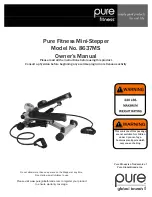
SEWING STITCH PATTERNS
C
h
ar
ac
te
r/D
ec
o
ra
tiv
e S
titc
he
s
105
4
SEWING STITCH PATTERNS
Sewing Attractive Finishes
Basic Sewing
a
Select a stitch pattern.
b
Attach presser foot “N”.
c
Place the fabric under the presser foot, pull the
upper thread under the presser foot and to the
side, and then lower the presser foot lever.
d
Press the “Reverse/Reinforcement Stitch”
button to sew reinforcement stitches, and
then press the “Start/Stop” button to start
sewing.
Note
• To achieve the best results when sewing character/decorative stitches, check the table below for the proper fabric/
needle/thread combinations.
• Other factors, such as the type or thickness of the fabric being sewn or the type of stabilizer material used, also affect the
stitching. Therefore, be sure to sew a few trial stitches before sewing your project.
• Since shrinkage or bunched stitches may result when satin stitches are sewn, be sure to affix stabilizer material to the
fabric.
• While sewing, guide the fabric with your hands so that it will be fed straight.
Fabric
When sewing on stretch fabrics, lightweight fabrics, or fabrics with coarse weaves, attach stabilizer on the wrong side
of the fabric. If you do not wish to do so, place the fabric on a thin paper such as tracing paper.
Thread
#50 - #60
Needle
With lightweight, regular, or stretch fabrics: Brother ballpoint needle (golden colored)
With heavyweight fabrics: home sewing machine needle 90/14
Presser foot
Monogramming foot “N”.
Using another presser foot may give inferior results.
b
c
a
a
Fabric
b
Stabilizer
c
Thin paper
CAUTION
• When sewing 7 mm satin stitch patterns and the
stitches are bunched, lengthen the stitch length. If
you continue sewing when the stitches are
bunched, the needle may bend or break (see
“Adjusting the Stitch Length” on page 44).
Memo
If the fabric is pulled or pushed during sewing, the
pattern may not be sewn correctly. In addition,
depending on the pattern, there may be movement to
the left and right as well as to the front and back.
Therefore, guide the fabric with your hands so that it
will be fed straight.
Summary of Contents for Innov-is QC1000
Page 9: ...8 ...
Page 51: ...USEFUL FUNCTIONS 50 ...
Page 101: ...SEWING THE STITCHES 100 ...
Page 119: ...COMBINING STITCH PATTERNS 118 Examples of Pattern Combinations ...
Page 137: ...USING STORED CUSTOM STITCHES 136 ...
Page 162: ...English 882 U60 XE0783 001 Printed in Taiwan Operation Manual 882 U60 ...
















































